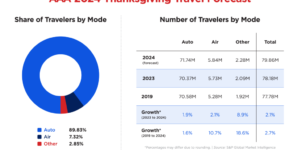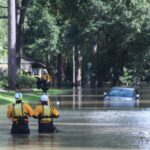Munich Re has teamed up with a unit of the National Insurance Crime Bureau to offer insurance carriers an analytics tool that can quickly assess property damage after natural catastrophes and speed up claims payments.
Roman Buegler, head of Munich Re’s innovation lab, said in an interview Wednesday that the German reinsurer developed the remote sensing technology. The tool is used in conjunction with aerial images taken by the Crime Bureau’s Geospatial Intelligence Center, a consortium of insurers that includes Munich Re and about 10 other insurance companies.
 Buegler said a pilot program that launched in 2016 showed 30% of all claims after a natural disaster can be settled after a simple desk audit using the remote sensing tool. He said Munich Re was able to extensively test the system using GIC aerial photography during the 2018 hurricane season, which brought ashore the Category 5 Hurricane Michael in Mexico Beach, Florida.
Buegler said a pilot program that launched in 2016 showed 30% of all claims after a natural disaster can be settled after a simple desk audit using the remote sensing tool. He said Munich Re was able to extensively test the system using GIC aerial photography during the 2018 hurricane season, which brought ashore the Category 5 Hurricane Michael in Mexico Beach, Florida.
Buegler said the analytical tool is available to each of the carriers that are members of the GIC. Carriers can also purchase the technology separately from Munich Re.
Ryan Bank, managing director of the Geospatial Intelligence Center, said in a press release that the system proved its potential to speed up claims payments after Hurricane Michael.
“In more than 40 percent of all property claims, its damage assessment was delivered before the insurer received the first notice of loss from the policyholder,” Bank said.
The center contracts with aviation companies to take photographs of damaged areas after hurricanes and other natural disasters. Munich Re’s automated damage classification analytics tool uses those images to create color-coded heat maps that show relative damage.
Buegler said those heat maps allow carriers to dispatch claims adjusting teams to areas that are the most heavily damaged. Munich Re’s remote sensing tool allows adjusters to dive deeper to find out how heavy the damage is likely to be on any particular property.
Cole Calhoun, a client solutions manager for Munich Re-owned American Modern Insurance Group, said the technology can quickly discern whether a property is a total loss and usually can confirm minor damage, such as the loss of roof shingles, allowing speedier settlements. He said the technology is so effective that after Hurricane Michael, insurance carriers were able to reach out to thousands of owners of damaged property before any claims were filed.
Brit Ltd., a speciality commercial property carrier headquarter in London, announced this week that it has joined the Geospatial Intelligence Center. The carrier said it was able to assess GIC’s aerial images after the 2018 California wildfires. Brit said in a press release thatit was able to quickly determine losses without any “on-the-ground presence.”
Brit said GIC can produce higher resolution post-event images than those offered by satellites or drones. The “ultra-high-resolution images” are both vertical and oblique, providing Brit with top down and 45-degree views to support quicker and more accurate loss adjusting and evaluation of risk, the carrier said.
The GIC also uses technology from Vexcel Imaging, a camera manufacturer based in Austria, and Esri, a mapping software firm based in Redlands, California, the center said.
*This story ran previously in our sister publication Claims Journal.





















 Allstate Thinks Outside the Cubicle With Flexible Workspaces
Allstate Thinks Outside the Cubicle With Flexible Workspaces  Cyber Crime Climbs, 90% of Americans Have Been Targeted
Cyber Crime Climbs, 90% of Americans Have Been Targeted  Allstate October Catastrophe Losses of $286M Include Milton, Helene
Allstate October Catastrophe Losses of $286M Include Milton, Helene  Mitigating Flood Risk 10x More Cost Effective Than Rebuilding: Swiss Re
Mitigating Flood Risk 10x More Cost Effective Than Rebuilding: Swiss Re 





